|
|
International Amphitheatre
Chicago's Union Stock Yard located in the New City Community Area opened on Christmas Day in 1865. It was operated by the Union Stock Yard and Transit Company, a group of railroad companies that acquired 475 acres of swampland southeast of the city, consolidated several small stock yards and turned it into a centralized processing area.1 The Stock Yard became the focal point of the rise of some of the earliest international companies. These companies refined novel industrial innovations and influenced financial markets. From the Civil War until the 1920s and peaking in 1924, more meat was processed in Chicago than in any other place in the world.2
Around 1885 the Union Stock Yard and Transit Co. built Dexter Pavilion, the original International Amphitheatre, on South Halsted Street just outside the Stock Yard Gate south of Exchange Avenue to host the yearly International Livestock Exposition. The concept of the Exposition, or International as it was referred to, was to facilitate competition and distribution of well-bred bulls on terms that would insure their being placed at once in service in various farming communities.3
In 1903 the Saddle and Sirloin Club was formed as a place where visitors and business men about the Yards could meet in comfort and was located in the Pedigree (Purebred Livestock) Records building at the corner of Exchange and Dexter Avenues. The club established a gallery of oil portraits kept in the top floor paying homage to livestock industry leaders throughout Europe and America. After selection by a committee of their peers, new members had their portraits added to the Club gallery each year.3
In 1912 the Stock Yard Inn was built adjacent to the Pavilion and Club which further expanded their mission of comfort and accommodation of stockmen having business on the Chicago market. Adjacent to the Pavilion and connected by steps and corridors to the Saddle and Sirloin Club, the Inn with authentic Tudor architecture stretched 220 feet along Halsted Street with an entrance to a courtyard and other wings. It had 175 rooms, 100 baths and a number of public and private dining rooms and meeting halls.3 However, in May of 1934, a fire in the Stock yards burned up $8,000,000 worth of property destroying eight blocks of buildings including the Pavilion, Stock Yard Inn and Saddle and Sirloin Club. The fire, considered the worst since the 1871 Chicago fire, left 1,200 homeless; 25 hospitalized, 3 missing; and 1 dead.4
Frederick H. Prince of Boston, formerly Chairman of the Board of the Union Stock Yard and Transit Company, expressed his faith in the livestock industry by giving his financial support to the vast reconstruction program of the Stock Yard area and to replace the entire complex. Landmarks and shrines such as the Saddle and Sirloin Club, the Stock Yard Inn and the Livestock National Bank were replaced. The Exposition opened in its new quarters, the International Amphitheatre, on December 1, 1934, less than seven months after the devastating fire.5 Club artist Robert Grafton was immediately commissioned to repaint the portraits lost when the gallery was consumed in the fire. He worked at a prodigious pace, replacing 104 portraits in 18 months.5
The completion of the Amphitheatre ushered in an era where Chicago reigned as a convention capital. In an era before air conditioning and space for the press and broadcast media were commonplace, the International Amphitheater was among the first arenas to be equipped with these innovations. The Amphitheatre cost $1.5 million to build.2 The seating capacity for stage shows was 12,000 with 4500 in the orchestra or main floor and 7500 in other levels. For arena type shows such as circuses or ice shows capacity was 9,000. Floor space was 123 feet by 238 feet with an 80 foot ceiling height. In addition to the Exposition it was used to host a variety of functions and conventions. Beginning in 1936 it was the new home of the yearly Chicago Auto show which had traditionally been held at the Chicago Coliseum since 1901.
In the Saddle and Sirloin Club there was a Reception Hall and a Gold Room, but the most impressive room in the Club was Baronial Hall. The vaulted oak-beamed ceiling and paneled walls imparted an atmosphere reminiscent of the banquet halls of medieval England. The paneled Banquet Hall, that could accommodate 400 people at luncheon or banquet, provided a popular setting for the numerous association meetings during the International and other events held at the Amphititheatre.5
In July of 1952 the International Amphitheatre played host to both the Democratic and Republican National Conventions. That year Senator Richard M. Nixon of California was named Vice Presidential candidate following the naming of General Eisenhower as Presidential candidate for 1952. They went on to win the election. The arena had been air conditioned by May of 1952 in time for the event(s).
It now boasted free protected parking for 4,000 automobiles. Coaxial cables for television, public address system, radio studios, and 1,000 pairs of telephone lines are part of the communication facilities. Expositions using the Amphitheatre are served by electric, gas, water, drain and steam lines, available in all parts of the 280,000 square feet of floor space. Range of events in the Amphitheatre make it in its uses the most diversified building of its kind in America. Auto racing, wrestling, rodeo, basketball, International Live Stock Exposition and Horse Show, dog show and boxing are among spectacles presented. Circus, polo, Ice shows, religious conventions, square dancing, truck “rodeos," dinners seating 4,000, scout meetings, boat shows, sports expositions, world trade fairs, flower shows, stage, radio and television productions, and a score of national industrial expositions make the Amphitheatre their Chicago home.6
The Stock Yard Inn also had one of Chicago's finest dining rooms called the Sirloin Room. Renowned for their steaks at the restaurant located at the north end of the International Amphitheatre, patrons reputedly were able to brand their own. In 1954 a Country and Western radio show aired on Chicago's WMAQ hosted by deejay Bill Bailey. It emanated from the Sirloin Room featuring music as well as interviews with cattle traders and dining guests.7
At the 1955 Auto Show, Lincoln debuted the 1955 Futura concept car, the first concept car to be fully functional and to be used as a rolling test lab. Lincoln only ever built the one and it debuted coincidentally on Elvis' birthday. It was said to be a forerunner to the 1956 Lincoln Premier, a model Elvis himself would purchase the following year. The Futura would later be painted red, appear with Debbie Reynolds in a 1959 movie, and after discard in the '60s would be saved, modified and see new life as TV's Batmobile.
In October of 1955, after a $2 million expansion with an adjacent section that increased exhibit space from 260,000 square feet to 440,000 the facility was then referred to as the Chicago Convention Building and International Amphitheatre and billed itself as the "Largest Convention and Exposition Building under one roof in the United States".
After several lean months, for the band, Elvis, Scotty, Bill and DJ along with the Jordanaires began the first of three short tours in 1957, which would be their last year touring together. The tour would include eight cities in ten days with stops in Chicago, St. Louis, Ft. Wayne, Detroit, Buffalo, Toronto, Ottawa and Philadelphia. The first appearance was on March 28th at the International Amphitheatre and, aside from their final Hayride commitment the previous December, was the first time they toured and performed in concert since the previous November.
Herb Lyon in his Chicago Daily Tribune column, Tower Ticker, on the 25th wrote, Ticket sales for Elvis Presley's Thursday night fling at the Amphitheater suddenly sagged [after a fast start]. And his new RCA-Victor disk, "All Shook Up," is lying there. Col. Tom Parker [Elvis' mentor] is all shook up? That may explain the advertisement on the 27th announcing that 5000 tickets would be held for sale at the door. In a later column he wrote, Elvis Presley and Col. Parker hid out at the Southmoor hotel on the south side for 24 hours before the show at the Amphitheater. Only took time out for a rehearsal. wouldn't talk to anybody in between because Elvis gets "all wound up." [Then, of course, he really unwinds.] Scotty, however, has said they only ever rehearsed for Television shows.
Peter Guralnick wrote, Elvis had a press conference at the Saddle and Sirloin Club at the Stockyards Inn in the afternoon, and that night he unveiled the $2,500 gold leaf suit that the Colonel had had made up for him. The idea had come from the gold cutaway that Liberace wore in Las Vegas, and the Colonel had Nudie Cohen, Hollywood tailor to the stars (or perhaps a certain kind of star, including all the bespangled country and western luminaries), come out to the movie set in his steer—horn-decorated Cadillac to measure him for it.8
The review in the Daily Tribune on the 29th read:
The Chicago show was the first of only three appearances that Elvis would make wearing the complete Gold suit. Peter further wrote, There were twelve thousand in attendance at the International Amphitheatre, with a $32,000 gross, and thirteen girls passed out during the performance, but what stood out most for the Colonel was the first time Elvis fell to his knees like Al Jolson and left fifty dollars’ worth of gold spangles on the floor. He went up to Elvis after the show and asked him please not to do it again. Elvis wore the suit the following night at the Kiel Opera House, in St. Louis, which sold out for only the second time in its history (the first was for Liberace).8
By September of 1956 ads in billboard boasted another $4 million expansion that had increased exhibit space to 587,000 square feet. It was again host to the Democratic National Convention in 1956 and the Republican National Convention in 1960. The structure was now long and large enough that during the '60s it would host indoor street and drag racing.
In spite of the expansions, 1960 was the last contiguous year of the annual Auto show at the Amphitheater. One coincidence about the show was the Willys Jeep exhibit that featured the new CJ-6 based Jeep Surrey - with the striped fringe top. The company was owned by Kaiser Industries, who had built the Hawaiian Village Hotel. These vehicles could be rented by vacationers there and they would be later featured in several of Elvis' movies, with one eventually owned by him and currently displayed at Graceland. Starting in 1961 the Auto Show was held at Chicago's new McCormick Place on South Lake Shore Drive, however, it would return from 1967 to 1970 after fire destroyed the first McCormick place and it was rebuilt. During the 1961-62 season the International Amphitheatre became the first home of the Chicago Packers of the NBA before changing their name to the Chicago Zephyrs and moving to the Chicago Coliseum for their second season. It would later be the first home of the Chicago Bulls in 1966.2
The Beatles performed at the International Amphitheatre on September 5, 1964 during their first major North American tour. The tour covered 22,000 miles in 29 grueling days. 5,000 fans greeted them when they landed at Midway Airport.9 Like Elvis, their concerts were also preceded by a press conference in the Banquet Hall of the Saddle and Sirloin Club.
They performed 11 songs in 34 minutes and received $30,000. The 13,000 mostly teenage, mostly female concertgoers showered them with jelly beans, in response to an innocent remark by George Harrison earlier in the year about his favorite snack food. Critics around town reacted bemusedly, with a condescending pat on the head to the youngsters for not starting a riot.9
"No, we wouldn't have missed it," declared Tribune columnist David
Condon, who covered the concert in a departure from his normal sports
duties. "Not because the Beatle noise beats anything that can't be
stirred up around the piano bar at the Singapore, but because the
Saturday show gave us a chance to be proud of the juveniles, who are
pretty much maligned in this turbulent age."9
While the International Amphitheatre was the first stop for Elvis and the boys in their last year of touring together it was also the first stop on what would turn out to be the Beatles' final US tour. On August 12, 1966 they performed two shows with supporting acts consisting of the Remains, Bobby Hebb, the Cyrkle, and the Ronettes. Although they'd just released a new album, he Beatles didn't bother rehearsing any new songs, using the same repertoire as they'd used on their tour of West Germany, Japan, and the Philippines.10
Political events at the Amphitheatre were not limited to the Democratic and Republican Conventions. Weeks after the Beatles appearance Muhammad Ali addressed the crowd attending the National Meeting of the Black Muslims at the International Amphitheatre and drew a standing ovation. Originally known as Cassius Clay, he changed his name after joining the Nation of Islam in 1964. In May of 1968 the Amphitheatre also played host to the 20th anniversary tribute to Israel's independence. Months later it again hosted the Democratic National Convention, which was the last there for either party.
The area around the Amphitheatre was surrounded by barbed wire for the 1968 Convention and policemen checked cars entering all of the entrances. Thousands of federal troops were flown in to be on hand should serious trouble erupt though the convention proceeded without incident. However, delegates inside protested the decision to adopt the Johnson-Humphrey Administration policy on the Vietnam War while rioting occurred elsewhere in the city.
1970 was the last year of the Auto show at the Amphitheatre, it returned to McCormick Place in 1971. The Union Stock Yard closed on August 1, 1971. It owed its origins to innovations in railroad transportation. In turn, direct sales from breeders to packers, the emergence of interstate trucking, and the resulting decentralization of the meat industry brought its decline.1 The Amphitheatre stayed open, hosting college basketball and IHSA playoff games, circuses, religious gatherings, and other events. Even Evel Knievel jumped there. Rock concerts, however, dominated the shows.2 In that time some of the other acts that appeared there included The Rolling Stones, The Who, Cheap Trick, Foghat, KISS, Judas Priest, Liberace, The Jackson 5, Led Zeppelin, David Bowie, Van Halen, Pink Floyd, Tom Jones, Rush, Yes, The Grateful Dead, and Earth, Wind, and Fire.2 Acoustically, however the venue was said to be a nightmare and the Amphitheatre's business waned as new venues opened in the suburbs.11 By the mid 1970′s, the building containing the Saddle and Sirloin Club in Chicago faced demolition. Frank Harding Jr. found a new home for the portrait collection, which was moved in 1977 to the Kentucky Fair and Exposition Center in Louisville.5
Around 1980 the Amphitheatre closed for several years and was ultimately sold at auction in 1983 by the Union Stock Yard and Transit Company for $250,000, but it subsequent owners failed to operate it successfully. The last event held there was a Hispanic dance troupe performance on May 29, 1999 and by June the International Amphitheatre was purchased from Sports & Entertainment Complex LP by the city of Chicago for $3.9 million.11 It was demolished the following August. Today, an Aramark Uniform Service plant sits on the site.
The limestone Union Stock Yard Gate is all that remains as one of the reminders of Chicago's past supremacy in the livestock and meatpacking industries. It was designated a Chicago Landmark in 1972 and a National Historic Landmark in 1981. page added January 8, 2011 Special thanks to the Leah Pfeister from the North American International Livestock Exposition and to Mark Bilek and Mitch Frumpkin of the Chicago Auto Trade Association for their assistance with this page. 1 excerpt from Union
Stock Yard - Encyclopedia of Chicago In the Shadows of the Amphitheatre The Andy Frain Company has been providing crowd management, security, usher and escort services for many of the major facilities in the Chicago area since 1924, including all of the major events that were held at the International Amphitheatre. They were readily identifiable by the blue and gold uniforms and Captain's hats.
One person in particular that had a 39 year career with the company and was witness to many events was Jack Gallagher. He started with the company in May of 1949 as an usher, quickly rising to chief usher, then sales manager and ultimately vice president before leaving in May of 1988. During his time with the company, Jack was fortunate to meet and work with and for a plethora of celebrities and dignitaries that visited and performed in the Chicago area and is often spotted in pictures from many of these occasions.
Standing 6' 5" tall, Jack was selected by the Secret Service to hand Dwight D. Eisenhower's acceptance speech to him on the podium in 1952 at the Republican National Convention and almost forcibly removed from his post on the podium during the President's return visit six years later, in 1958. He met Muhammed Ali in 1958 when he was still Cassius Clay fighting in the Golden Gloves in Chicago and he presented flowers to Queen Elizabeth and Prince Philip during their visit in 1959.
He was there when General Douglas MacArthur addressed the crowd at Soldier Field in 1951 and drove future President Ronald Reagan to and from the Chicago Auto Show where he served as the Grand Marshall in 1954. He drove Attorney General Bobby Kennedy along with Mayor Richard J. Daley and a Medal of Honor recipient down State Street in 1961 during the Columbus Day parade and two years later, surprised at the lack of security, escorted the President's mother, Rose Kennedy, to a luncheon at the Conrad Hilton Hotel, just a month before the assassination of her son.
In 1962 he drove Arthur Godfrey to the International Stockshow from the Edgewater Beach Hotel and back and on another occasion sat with him and Irv Kupcinet in the front row while Frank Sinatra and the Rat Pack performed. He has nothing but great things to say about Nat King Cole who used to perform at the Chez Paree. Ertha Kitt once wore his hat and Florence Henderson performed with it.
In September of 1964 he was assigned to the Beatles when they came to Chicago and sat in on the strategy meetings with the police and fire departments, amphitheatre officials and promoters of show. Frank Fried of Triangle Productions was the promoter and Jack recalls that they wanted a 15 minute intermission, mainly to sell stuff. The police, however, said there would be no intermission and there was none.
Jack said that the Beatles were housed in the Stock Yard Inn for several hours prior to the show and he along with coworker Lester Modesti were assigned in the halls and instructed to not allow anyone in. They turned away Playboy publicist Benny Dunn who tried to gain access to do a story as well as Gus Hinkens, the general manager of the Stock Yard Inn. He recalls how they laughed when Brian Epstein sent Lester downstairs in search of a hair dryer for one of the Beatles because "men didn't use them at the time."
Later, they escorted the Beatles down to the limousine which took them about 25 feet to the door of the Amphitheatre and the doors opened and they went up in the car in the elevator. There they stayed in the general managers office until it was time for them to go on. At showtime Lester and he went to the front of the stage where they opened the curtain to what he described as the "loudest sound you heard in your life and more flashbulbs than you could stand to look at. It was like standing next to an airplane or a train."
After the show they came off the stage, jumped into the limo and were gone, no encore. That was the end of the Beatles' trip to Chicago for him and they weren't seen again until they returned in 1965 to Comiskey Park, which by the way is where Jack had been moonlighting since 1959 when hired to run the players parking lot by none other than Chuck Comiskey himself. He recalls how George Steinbrenner would always unnecessarily tip him $100 when he visited and has nothing but good things to say about him too.
In 1963 Jack drove Bob Hope and his wife Dolores for Chrysler Corp. on one visit to Chicago and on Dolores' request had him drive again on their next visit. This started him on a personal friendship with the Hopes in which he also served as Bob's driver and "man Friday" in Chicago and all over the Midwest for the next 36 years. In 1988 Jack left Andy Frain and went to work as an exhibit coordinator for the Chicago Auto Show and director of dealer relations of the Chicago Automobile trade association, positions he would hold for the next eleven years.
Retired now, these are just a sampling of the many brushes with celebrities Jack has had in his storied career. Unfortunately for us he didn't work the show at the Amphitheatre when Elvis performed but the recollections of the others he has could fill a book and we're appreciative of the few that he chose to share with us. Early on he started the practice of having people he encountered autograph baseballs, and to date he has many. added February 24, 2011
|
|
All photos on this site (that we didn't borrow) unless otherwise indicated are the property of either Scotty Moore or James V. Roy and unauthorized use or reproduction is prohibited. |


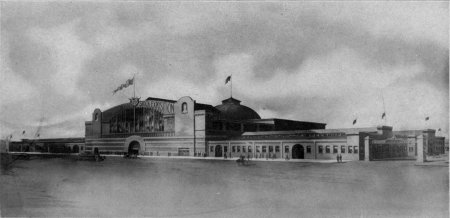







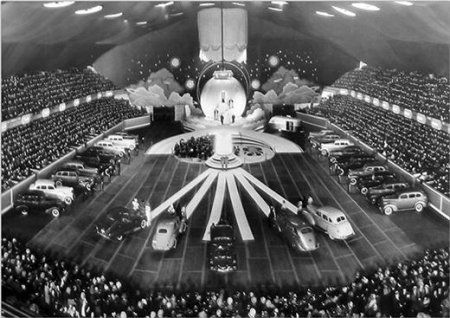





yuF!~~0_3.jpg)


















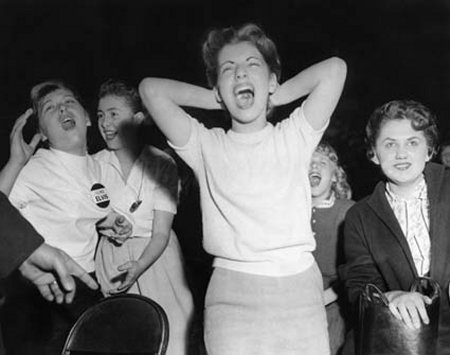



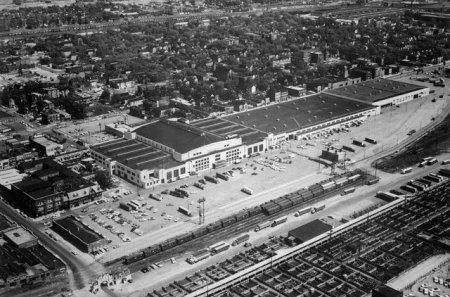



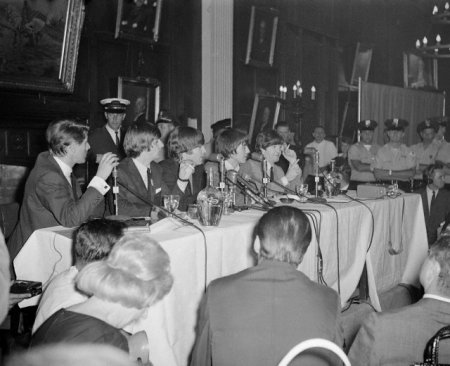






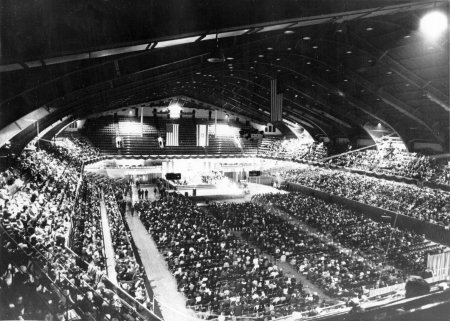



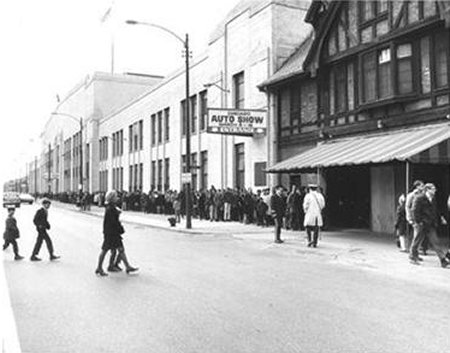





.jpg)
.jpg)
.jpg)
.jpg)




